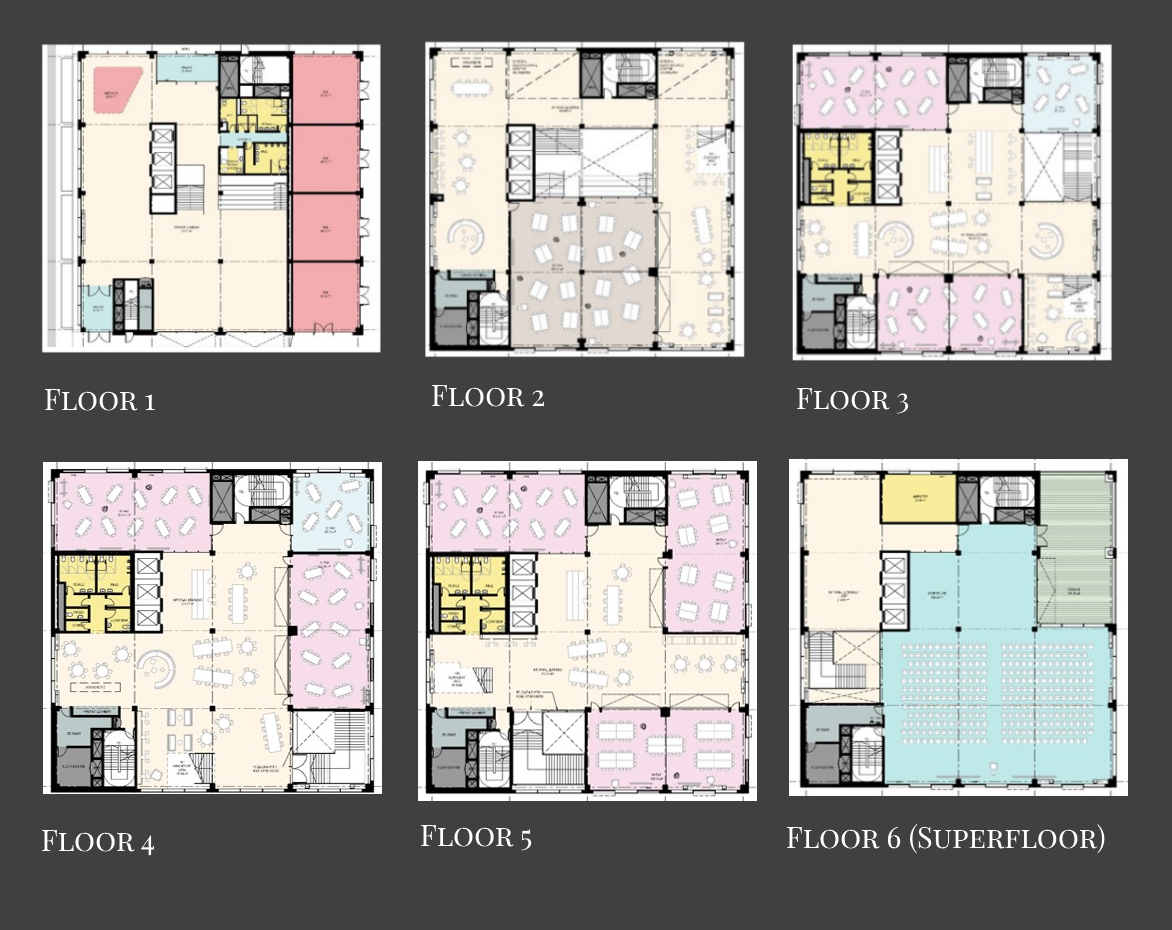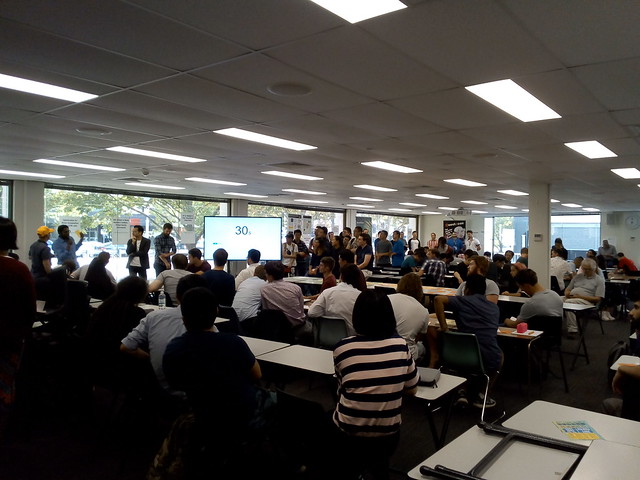Use Classrooms More Intensively
One way to reduce energy use per person is by increasing the intensity of use of the buildings. Empty rooms use almost as much energy as full ones, so the more use of each room in each building, the lower per person energy use.
| New ANU Buildings (artists' impression). |
 |
| ANU Culture and Events Building |
 |
| ANU Collaborative Learning Building |
Flat floor classrooms are conventionally used for small groups of up to a few dozen students. However, with technology and new teaching techniques, such rooms can accommodate hundreds of students.
Training to help make use of classrooms
 Training can help make flexible classrooms more efficient, in terms of teaching and energy use. Academics familiar only with conventional lectures and tutorials will tend to use the new flexible teaching spaces only for old fixed teaching formats. To use the rooms flexibly requires the staff to be training in flexible formats.
Training can help make flexible classrooms more efficient, in terms of teaching and energy use. Academics familiar only with conventional lectures and tutorials will tend to use the new flexible teaching spaces only for old fixed teaching formats. To use the rooms flexibly requires the staff to be training in flexible formats.As an example, an instructor used to conventional lecture driven teaching will find the idea of hundreds of students in a room working in teams a recipe for chaos. The instructor needs to be taken through the theory and practice of how this works, and ideally act as an assistant in such a class before being required to be the lead instructor.
The ANU TechLauncher events for Team Formation and Bootcamp run in the ANU's large flat floor teaching rooms, at 7-11 Barry Drive, have demonstrated that group exercises with 300 students can work. By introducing academics to these techniques, they will be more confident to use them in courses.
Use e-Learning to Supplement Campus
E-learning can also be used to increase the intensity of campus use. Most courses at Australian universities are now, to some extent, "blended", with part of the tuition on-line. However, to make the best use of the technology course designers and instructors need to be trained in on-line techniques.
Academics who have only training and experience in face-to-face lectures and tutorials will tend to continue to rely on those techniques and be reluctant to try e-learning. There will be concern the students will not do the work, or will cheat, which can be the case if materials are not well designed and trained staff are not available to run on-line courses.
With the appropriate level of training it is feasible to aim for the typical university program to be a 20/80 blend: 20% in a formal classroom setting and 80% on-line outside the classroom. An example of this approach is the ANU Techlauncher program, where students undertake a group project building software for a real client, in government or industry. Students are expected to undertake 10 hours of study per week, but are only required to attend a 2 hour formal session in a typical week.
Ideally students should be on campus no more than the equivalent of one day a week. Students should be out in the real world learning and practicing their skills.
Double University Per Person Intensity of Use
Less than half of students attend a typical university class. A survey at ANU found "... attendance declines over semester to around 30% of original signup ...". This is not confined to ANU and is not a new feature of universities. However, universities still tend to allocate teaching space based on the number of students enrolled in the class at the beginning of semester. As a result the classrooms tend to be less than half full after the first few weeks. This is a waste of space and also a waste of energy needed to maintain these spaces.
One way to engage students, and thus attract them to class, is with group activities, as is done with ANU Techlauncher. This ensures almost full attendance at interactive group activities. Blends of on-line and face to face activities (so called flipped classrooms) can keep students coming to class. However, not all students need to attend every class and many classes will have one third to one half attendance. This can be incorporated into space use planning.
Students can be given the opportunity to book a seat in class a few days in advance. Classrooms can then be allocated, making use of different size rooms and flexible walls and formats, to suit. A reasonable aim would be to double the intensity of use of classrooms, thus halving the per person energy use.
Reduce Staff Campus Use
Persons use of the campus includes staff as well as students. Most teaching undertaken at a university is not by full time, permanent academics, but by graduate students and part time staff from industry. E-learning is a particularly useful way to make use of part time staff skills. Industry professionals can teach students without having to leave their workplace. Researchers in the field can teach students. However, this will require the staff to be trained in techniques for e-learning. The ideal way to conduct this training is on-line.More on:
No comments:
Post a Comment